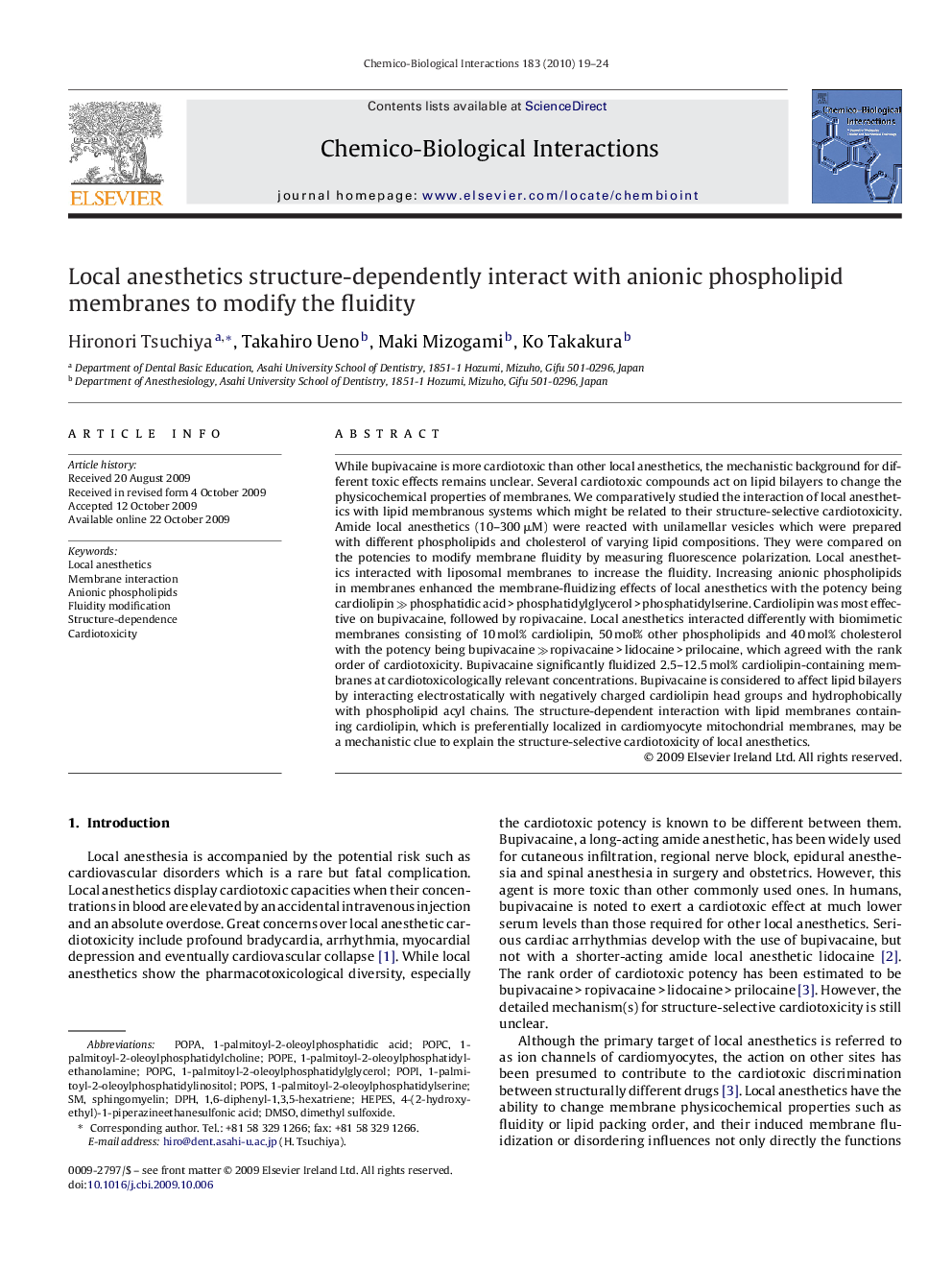| Article ID | Journal | Published Year | Pages | File Type |
|---|---|---|---|---|
| 2581401 | Chemico-Biological Interactions | 2010 | 6 Pages |
Abstract
While bupivacaine is more cardiotoxic than other local anesthetics, the mechanistic background for different toxic effects remains unclear. Several cardiotoxic compounds act on lipid bilayers to change the physicochemical properties of membranes. We comparatively studied the interaction of local anesthetics with lipid membranous systems which might be related to their structure-selective cardiotoxicity. Amide local anesthetics (10-300 μM) were reacted with unilamellar vesicles which were prepared with different phospholipids and cholesterol of varying lipid compositions. They were compared on the potencies to modify membrane fluidity by measuring fluorescence polarization. Local anesthetics interacted with liposomal membranes to increase the fluidity. Increasing anionic phospholipids in membranes enhanced the membrane-fluidizing effects of local anesthetics with the potency being cardiolipin â«Â phosphatidic acid > phosphatidylglycerol > phosphatidylserine. Cardiolipin was most effective on bupivacaine, followed by ropivacaine. Local anesthetics interacted differently with biomimetic membranes consisting of 10 mol% cardiolipin, 50 mol% other phospholipids and 40 mol% cholesterol with the potency being bupivacaine â«Â ropivacaine > lidocaine > prilocaine, which agreed with the rank order of cardiotoxicity. Bupivacaine significantly fluidized 2.5-12.5 mol% cardiolipin-containing membranes at cardiotoxicologically relevant concentrations. Bupivacaine is considered to affect lipid bilayers by interacting electrostatically with negatively charged cardiolipin head groups and hydrophobically with phospholipid acyl chains. The structure-dependent interaction with lipid membranes containing cardiolipin, which is preferentially localized in cardiomyocyte mitochondrial membranes, may be a mechanistic clue to explain the structure-selective cardiotoxicity of local anesthetics.
Keywords
1-palmitoyl-2-oleoylphosphatidylethanolamineHEPESPOPIPOPGPOPAPoPCDPH1-palmitoyl-2-oleoylphosphatidylcholine1-palmitoyl-2-oleoylphosphatidylglycerol1,6-diphenyl-1,3,5-hexatriene4-(2-hydroxyethyl)-1-piperazineethanesulfonic acidDMSOPOPssphingomyelinLocal anestheticsMembrane interactionDimethyl sulfoxideCardiotoxicityAnionic phospholipidsPOPE
Related Topics
Life Sciences
Environmental Science
Health, Toxicology and Mutagenesis
Authors
Hironori Tsuchiya, Takahiro Ueno, Maki Mizogami, Ko Takakura,
